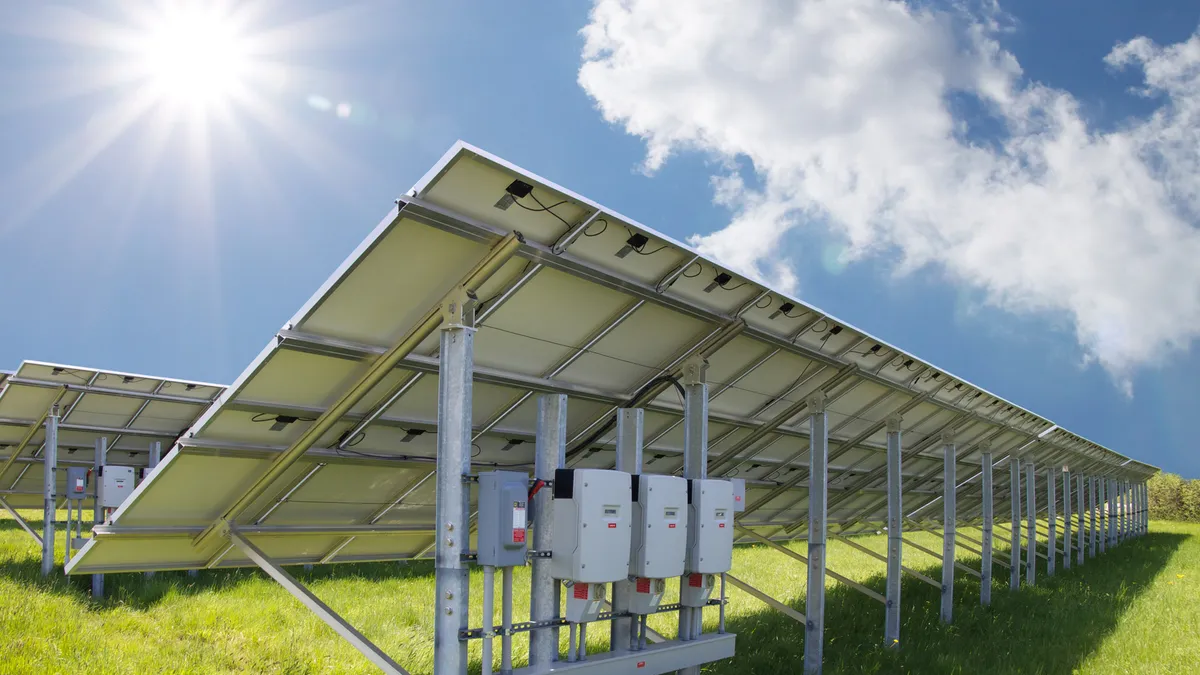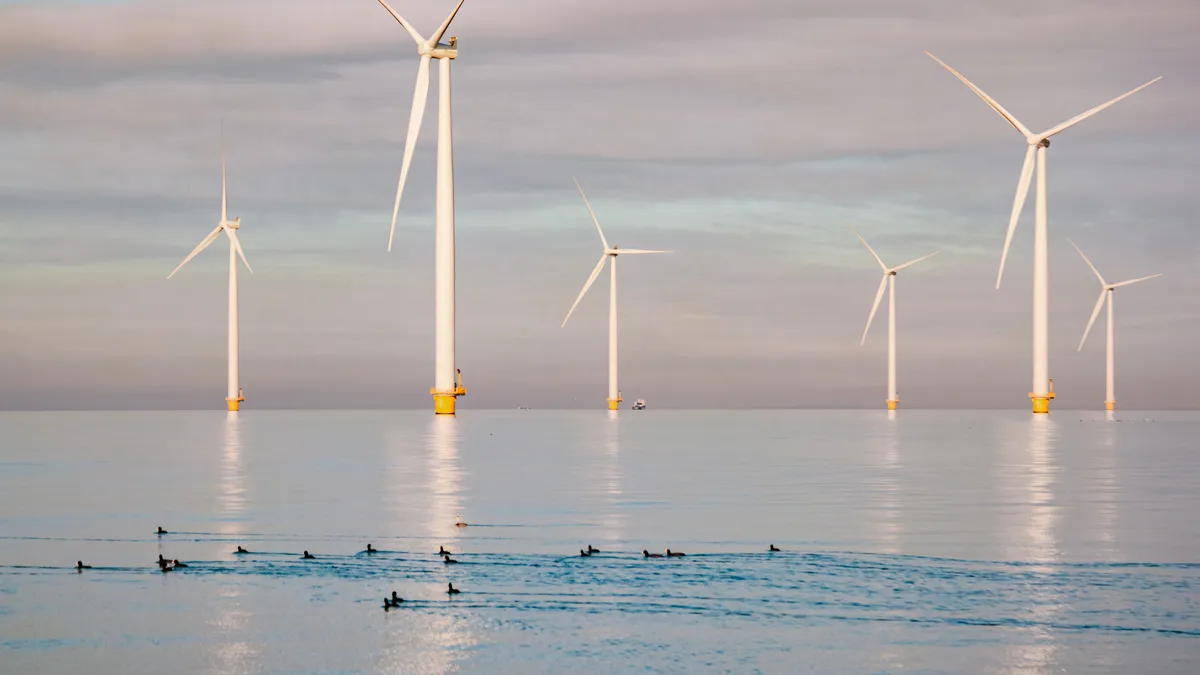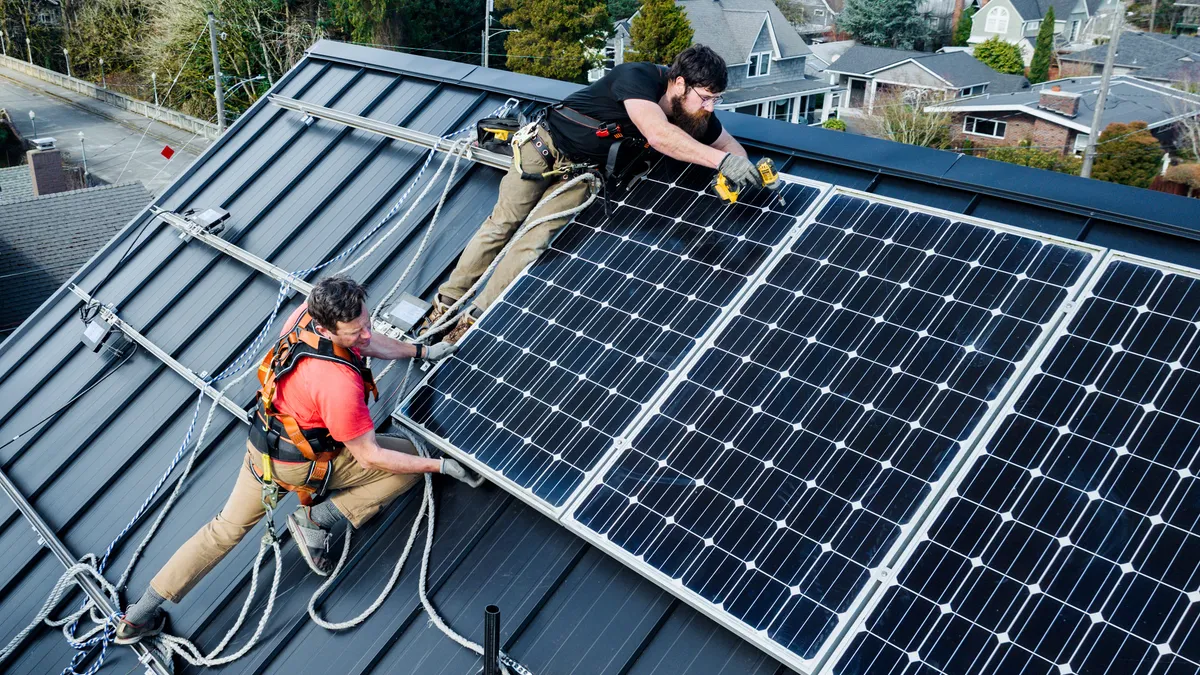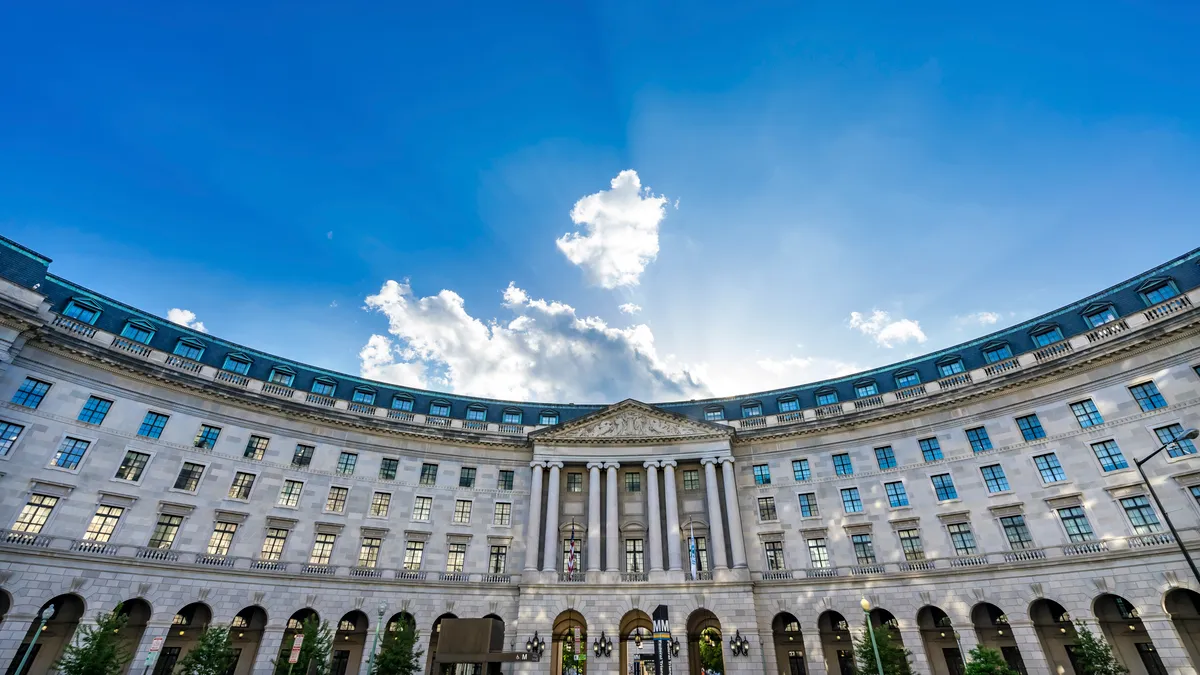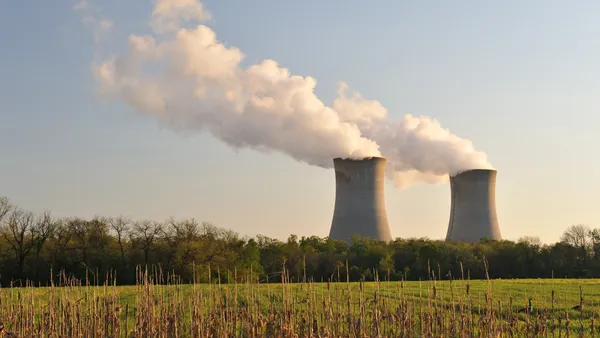Hawaii has always been a leader in renewables innovation, so it should come as no surprise that the state is eyeing ways to make a community renewables energy plan to open access to all residents.
Home to the nation’s highest electricity prices and per-capita rooftop solar penetration, a renewables-only community energy choice could help the state meet its goal of 100% renewables mandate by 2045.
In June 2015, Hawaii’s Legislature passed a law ordering regulators to design and implement a community-based renewable energy program (CBRE). While such projects usually focus on community-shared solar, some community collaboration have built wind and other renewables projects. Under the bill, electric utilities in Hawaii must work with stakeholders to develop a program and tariffs opening up access to renewables regardless of location.
Hawaii’s investor-owned utility, the Hawaiian Electric Companies (HECO), filed its CBRE plan in October 2015, but the staff of the Hawaii Public Utilities Commission found multiple issues. The proposal included cost calculations and flat bill credits to customers that limited program flexibility, they said, and did not include “market signals to encourage features with added value, such as dispatchability.”
HECO “did not offer a viable proposal for community solar and none of the community solar developers were going to participate,” said Jeff Cramer, executive director of the Coalition for Community Solar Access. “But there is a way to do development prudently and at a reasonable pace that is beneficial for customers, developers, and utilities.”
Along with comments on HECO’s plan, the PUC staff recently released an alternative proposal containing similar provisions to staff plans in other states like Colorado, Minnesota, and Massachusetts.
But unlike those states, staff also included a call to use time-of-use rates to set bill credit value for program participants — a first for a community solar program, according to community energy experts.
“Compensation should be linked to the value that the project provides to the grid,” staff wrote. Hawaii already has “an abundance of renewables generation at midday” that is putting constraints on the distribution system.
The filing proposed three credit rate caps for the following time periods: Mid-Day, On-Peak, and Off-Peak. Generation sent to the grid at peak demand periods will be more highly compensated.
The higher compensation for peak generation is “exactly the right recipe for enabling a market for storage-associated renewables projects,” said Richard Wallsgrove, Blue Planet Foundation Policy Director. “We've seen the enormous power of enabling a market for rooftop solar, so I hope we can do the same for community solar options.”
The staff’s 'more flexible option'
The PUC staff drew the core elements of its CBRE proposal from a separate proposal from the Kauai Island Utility Cooperative (KIUC), which provides power to the island of Kauai, the only non-HECO jurisdiction in the state. Additional elements were adopted from stakeholder input, as well as “assessment of major community solar programs in the country” and “market research and knowledge from other active dockets."
The market-based framework seeks to set price signals for a full range of community-based project sizes and types. The intent is to give third-party community energy developers incentives to create “business models that provide value to the grid and minimize any negative impact to non-participating customers.”
The Staff proposal focuses on two key goals:
First, it would allow customers to provide renewable energy to their utilities with standardized and streamlined interconnection processes. Second, it would allow utilities to credit customers with “fair compensation” for the electricity and grid services they provide their utilities and nonparticipating customers.
HECO’s proposed tiered sizing and phased-in approach remain in the staff plan.
A first tier for projects from 25 kW up to 250 kW would keep installations at “community-scale” and “avoid proliferation of smaller systems with commensurately high administrative costs.” A second tier for systems 250 kW and above would be selected through a competitive reverse-auction bidding system, and “encourage diversity” through the marketplace.
In the first phase, utilities would be limited to program administration to allow a market to develop among third-party vendors. After that, they would be allowed to rate base and recover their costs for administering the CBRE program, the staff proposed. This would include costs for procurement, setup, and operation of billing and software systems and program and website operation and maintenance fees.
Time-of-use rates and 'value provided to the grid'
TOU rates are a common option for regulators incentivize consumers to reduce their peak usage and deliver distributed generation and other services when they are needed most. Even so, none of the Hawaii stakeholders or multiple national community energy experts were aware of previous proposals to apply them to shared renewable energy projects.
Staff noted the KlUC’s proposal as important in its consideration of TOU rates. It also noted a joint stakeholder proposal for a $0.17/kWh credit rate and 2% annual escalator “for all CBRE facilities across all sizes, islands, and customer classes.”
Staff’s mid-day, on-peak, and off-peak rates would instead be set by competitive credit rate procurement (CCRP) processes. The Commission would set caps for Phase 1 and then let prices be determined through reverse auction-like developer bidding. Utility-led procurements in Phase 1 might, staff notes, require oversight by an Independent Observer.
Staff also details how developers can be compensated for output from arrays that is not subscribed for by customers and how developers can be compensated for program costs.
Finally, and crucially, the staff proposal deals with curtailment. At Hawaii’s high level of renewables penetration, mid-day and off-peak over-generation is already going unused by the utilities.
To protect CBRE developers and subscribers, staff suggests that uncompensated curtailment not be allowed for Tier 1 systems in Phase 1. For Tier 2 systems, protective limits to curtailment should be set ahead of the procurement auctions that are “consistent with treatment of curtailment in recent solicitations and PPAs.”
HECO’s concerns – another cost shift?
When asked to discuss HECO’s reaction to the staff CBRE proposal, Spokesperson Peter Rosegg suggested evaluating the utility’s written concerns filed with the PUC.
Its key guidelines for a CBRE program, the utility's filing reports, are to expand customer options, in a cost effective, fair, sustainable way. This must not, however, "increase the cost-shifting that was experienced with net energy metering (NEM).” It must, the utility adds, ensure a CBRE program in which “the economic benefits of renewable energy go to participants.”
Based on these guidelines, the utility assessment describes three areas of concern in the Staff proposal.
First, according to the filing, it “lacks appropriate consumer protection measures.”
The emphasis on allowing business models to emerge from the marketplace “has eliminated all safeguards proposed by the [utility] to help ensure that CBRE interests are not ‘securities’ and do not require registration under federal and state securities laws.”
Efforts are already in the works, however, at the commission to address this issue, the filing acknowledges.
Beyond the question of securities laws, too much marketplace latitude without “a reasonable amount of consumer protections” will have unintended negative consequences on customers, the utility cautions.
In its rooftop solar program, HECO has seen “misleading business practices and violations of the [utility’s] interconnection rules” by some distributed resources contractors that have harmed customers, it adds.
Jeffrey Ono, executive director of the Hawaii Division of Consumer Affairs, echoed many of HECO’s concerns, but said they would not keep him from supporting CBRE.
“I want to see a community renewables program put in place,” he said.
HECO’s second objection to the Staff-proposed CBRE program is that it “will likely result in increased administrative cost and implementation risk.”
The online marketplace, the three TOU credit rate caps, and the two project size tiers all add “complexities” that will cost more and increase “implementation risk.” HECO asserts.
These things “may have value,” but should be added in Phase 2, after the utility has implemented “the basic functions of the program,” the filing argues.
Mark Glick, head of the State Energy Office and responsible for some utility program oversight, endorsed the staff's proposal of an online competitive marketplace for community solar. Despite HECO's objections, he is “confident the PUC will be diligent in its review that the utility is open and participatory.”
Finally, HECO's filing argues, the Staff proposal “does not adequately mitigate the risk of cost-shifting and subsidization of the CBRE program by non-participating customers.”
The Staff’s proposed credit rate caps seem “outdated and too high compared to current marginal costs,” the filing reports, arguing they are out of line with lower prices for recently approved renewables PPA prices.
These high prices “may result in a premium for energy supplied to the grid paid for by non-participating customers,” according to the filing.
Ono wants more input on this question. “There has to be a balance between issues of cross-subsidization and making sure the amount of the credits have enough value to attract customers who have been shut out of the rooftop solar market,” he told Utility Dive.
TOU rates and renewable stakeholder concerns
All Hawaii stakeholders interviewed for this article – including representatives of the Coalition for Community Solar Access (CCSA), Blue Planet Foundation, Community Energy Collective (CEC), EarthJustice, the Hawaii Division of Consumer Affairs, and the State Energy Office – endorsed the Staff proposal. But all also had concerns — many of them similar.
CCSA endorsed the Hawaii Renewable Energy Alliance (HREA) filing with the PUC, said Cramer.
As HREA argued, the credit rate caps must be higher than those proposed by the staff, Cramer said.
“The analysis characterized community solar at the wholesale price and that is a fundamental misunderstanding,” he said. “Community solar is a retail product, with costs utility-scale solar does not have like customer acquisition and program administration.”
The competitive auctions are of a similar concern because this emerging market “cannot just go to the lowest common denominator and absolute lowest price,” he added.
Ono and EarthJustice Attorney Isaac Moriwake share this concern. State Energy Office head Glick expects it to be “heavily debated” and “further refined and then found to be acceptable.”
HREA, CCSA, EarthJustice, and CEC support HECO being allowed to rate base and recover all administrative costs “because the program will benefit the entire rate base,” Cramer said. “We want to figure out the best ways to include both utilities and private developers in the process.”
These concerns are “critical” to a viable program but if they are dealt with they would drive growth, Cramer said. “And if the program includes TOU tariffs, it could enable developers to offer community solar-plus-storage.”
The staff proposal is what Blue Planet Foundation wanted when it supported Act 100, but it is does not grow enough community energy soon enough, Wallsgrove said.
“We envision a program that is big and systematically changes the way renewables are accessed,” he said. “We don’t object to limits for Phase 1 but it needs to be very short and lessons learned should be assessed quickly so Phase 2 can start right away.”
The TOU rate is important because there are not enough enabling options for energy storage, Wallsgrove said.
The recent KIUC utility-scale solar-plus-storage $0.145/kWh PPA price shows “dispatchable solar” is cost-competitive on Hawaii, he noted. “Any market mechanism like the TOU rate in the CBRE proposal that will unlock storage for consumers is a step in the right direction. We just need more of them, sooner.”
Blue Planet ultimately wants a “dynamic TOU rate that applies on both sides of the equation because it will create incentives for storage, for change of behaviors, and for the smart home future that decides when to use energy to optimize economics,” Wallsgrove said.
CEC, the leading U.S. community solar developer, sees the Staff proposal as “very good but not perfect,” said Corporate Development VP Tom Hunt.
“It lays out a solid structure and accelerates momentum in the docket and the TOU rates encourage developers to consider storage," he said. "But much depends on the final credit rates and how they are structured."
A partnering of community distributed generation and storage makes sense in Hawaii because of the uniquely high penetration of renewables, he said.
It is an “interesting synergy” for community energy developers because co-locating the two resources would get more value from the hundreds of thousands of dollars they pay for system upgrades and interconnection, Hunt added.
But because the TOU rates are so new in these programs, it is not yet clear they “create enough additional benefits from storage to make it worth investing in,” Hunt said. “Is there enough in economic benefit from shifting the delivery of the generation to a different time period that it would pay for the storage? We don’t know.”
In the absence of storage, the TOU rates could lower revenue from projects by reducing the mid-day and off-peak returns, Hunt added.
CEC is also concerned about curtailment remuneration and the two factors together “could limit the success of community solar,” Hunt said.
It is not yet clear to CEC that a program that requires explaining TOU rates and curtailment compensation to subscribers would sell as readily and have the same customer benefits as rooftop solar. “There is definitely a risk. That is why we say it is not a perfect proposal.”
Moriwake supports many aspects of the staff proposal, he saido “potentially fatal flaws” are a too low credit rate and the inadequately settled question of curtailment, Moriwake said. “They together create a black hole of compensation that could prevent community solar from being financed and marketed.”
To Ono, curtailment is a consumer protection issue. “If consumers have an expectation of a certain monthly return but curtailment losses are passed on to them, that return can be significantly changed,” he said. “We want to make sure people understand what they are getting into.”
The staff also proposes that 5% of each CBRE project’s total capacity be allocated to low- and moderate-income customers but “I’m not sure that will attract them and get their commitment,” Ono said. “It might be better to offer a higher credit rate or a shorter term, like month-to-month, because renters often can’t make long term commitments.”
‘No show stoppers’
Like Ono, Glick said the State Energy Office finds in the staff proposal key issues that have to be reviewed more closely. But, he added, it contains "no show stoppers.”
His impression is that the utility wants the CBRE program to move forward and that “there is wide acknowledgement, this is a big delivery mechanism for renters and to make the distribution of clean energy more equitable.”
Hawaii’s most important postcard from the future to date has been is its effort to resolve shortcomings in its NEM program and lessons learned there can be applied to the CBRE program, Ono said.
“We shouldn’t just dive in and fix things as we go," he added. "We can resolve many of these issues before we start the program and minimize the potential for significant problems in Phase 1. But we have to get started.”


